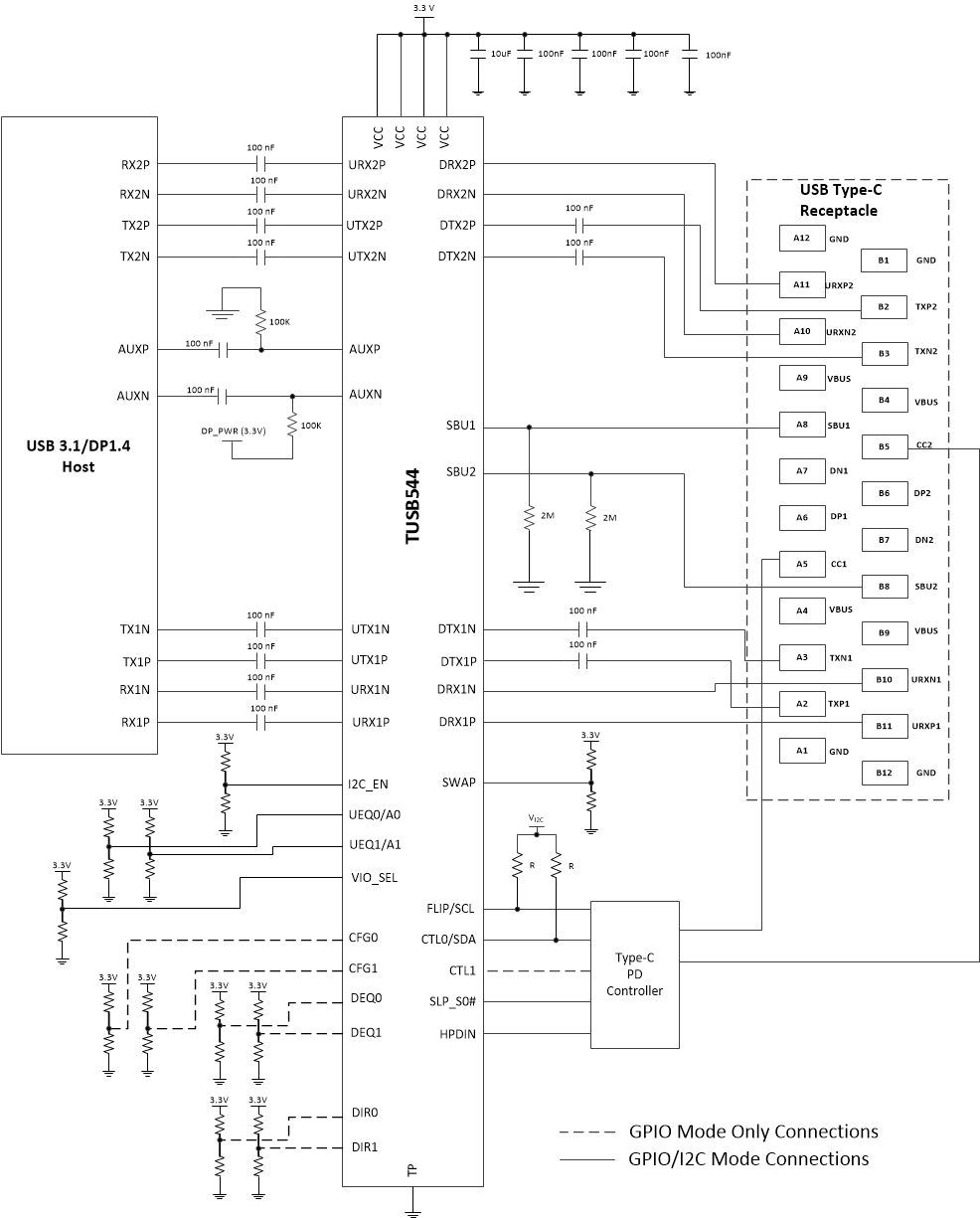ZHCSG75E April 2017 – April 2018 TUSB544
PRODUCTION DATA.
- 1 特性
- 2 应用
- 3 说明
- 4 修订历史记录
- 5 Pin Configuration and Functions
- 6 Specifications
-
7 Detailed Description
- 7.1 Overview
- 7.2 Functional Block Diagram
- 7.3 Feature Description
- 7.4 Device Functional Modes
- 7.5 Programming
- 7.6
Register Maps
- 7.6.1
TUSB544 Registers
- 7.6.1.1 GENERAL_4 Register (Offset = Ah) [reset = 1h]
- 7.6.1.2 GENERAL_5 Register (Offset = Bh) [reset = 0h]
- 7.6.1.3 GENERAL_6 Register (Offset = Ch) [reset = 0h]
- 7.6.1.4 DISPLAYPORT_1 Register (Offset = 10h) [reset = 0h]
- 7.6.1.5 DISPLAYPORT_2 Register (Offset = 11h) [reset = 0h]
- 7.6.1.6 DISPLAYPORT_3 Register (Offset = 12h) [reset = 0h]
- 7.6.1.7 DISPLAYPORT_4 Register (Offset = 13h) [reset = 0h]
- 7.6.1.8 DISPLAYPORT_5 Register (Offset = 1Bh) [reset = 0h]
- 7.6.1.9 USB3.1_1 Register (Offset = 20h) [reset = 0h]
- 7.6.1.10 USB3.1_2 Register (Offset = 21h) [reset = 0h]
- 7.6.1.11 USB3.1_3 Register (Offset = 22h) [reset = 0h]
- 7.6.1.12 USB3.1_4 Register (Offset = 23h) [reset = 23h]
- 7.6.1
TUSB544 Registers
- 8 Application and Implementation
- 9 Power Supply Recommendations
- 10Layout
- 11器件和文档支持
- 12机械、封装和可订购信息
8.2.2 Detailed Design Procedure
A typical usage of the TUSB544 device is shown in Figure 35. The device can be controlled either through its GPIO pins or through its I2C interface. In the example shown below, a Type-C PD controller is used to configure the device through the I2C interface. In I2C mode, the equalization settings for each receiver can be independently controlled through I2C registers. For this reason, all of the equalization pins (UEQ[1:0] and DEQ[1:0]) can be left unconnected. If these pins are left unconnected, the TUSB544 7-bit I2C slave address will be 12h because both UEQ1/A1 and UEQ0/A0 will be at pin level "F". If a different I2C slave address is desired, UEQ1/A1 and UEQ0/A0 pins should be set to a level which produces the desired I2C slave address.
 Figure 35. Typical Application Circuit
Figure 35. Typical Application Circuit